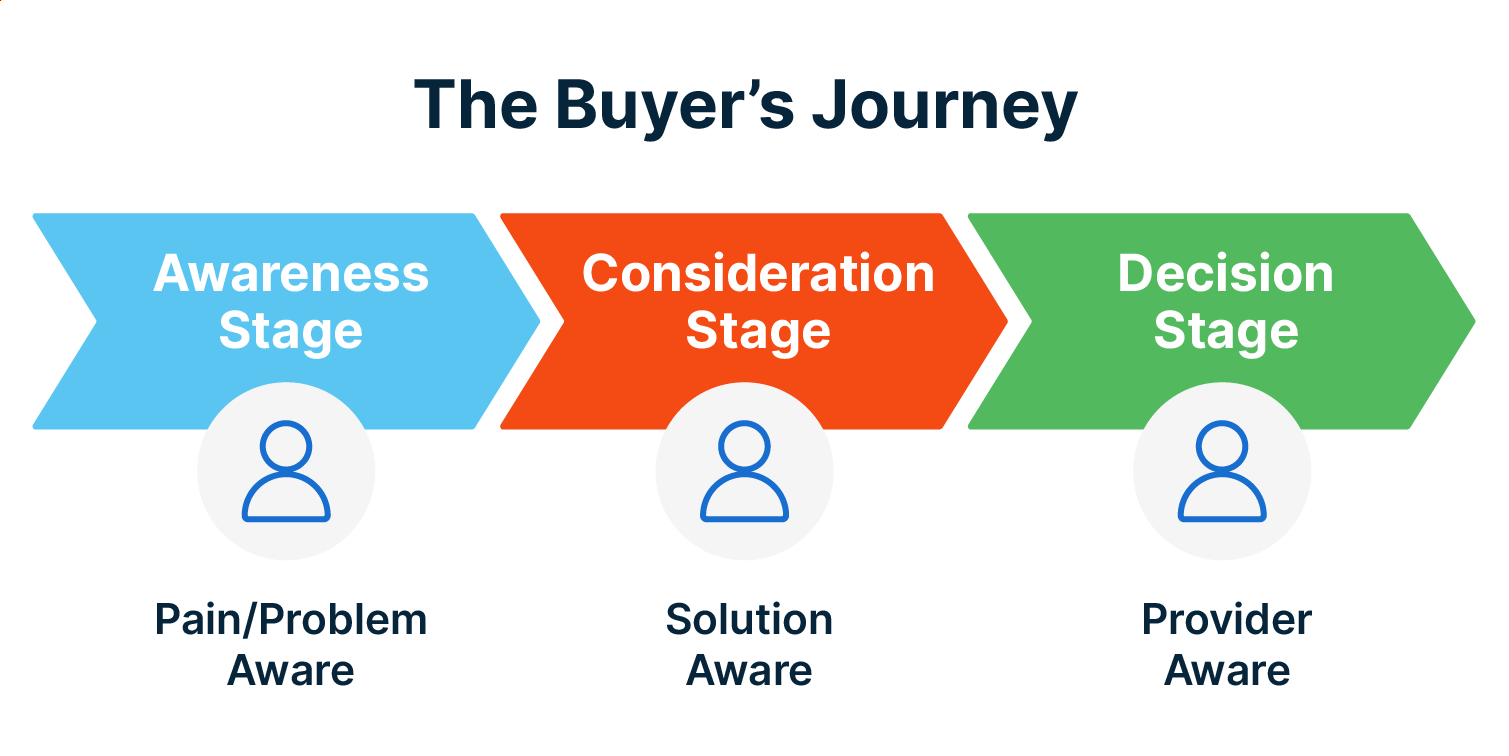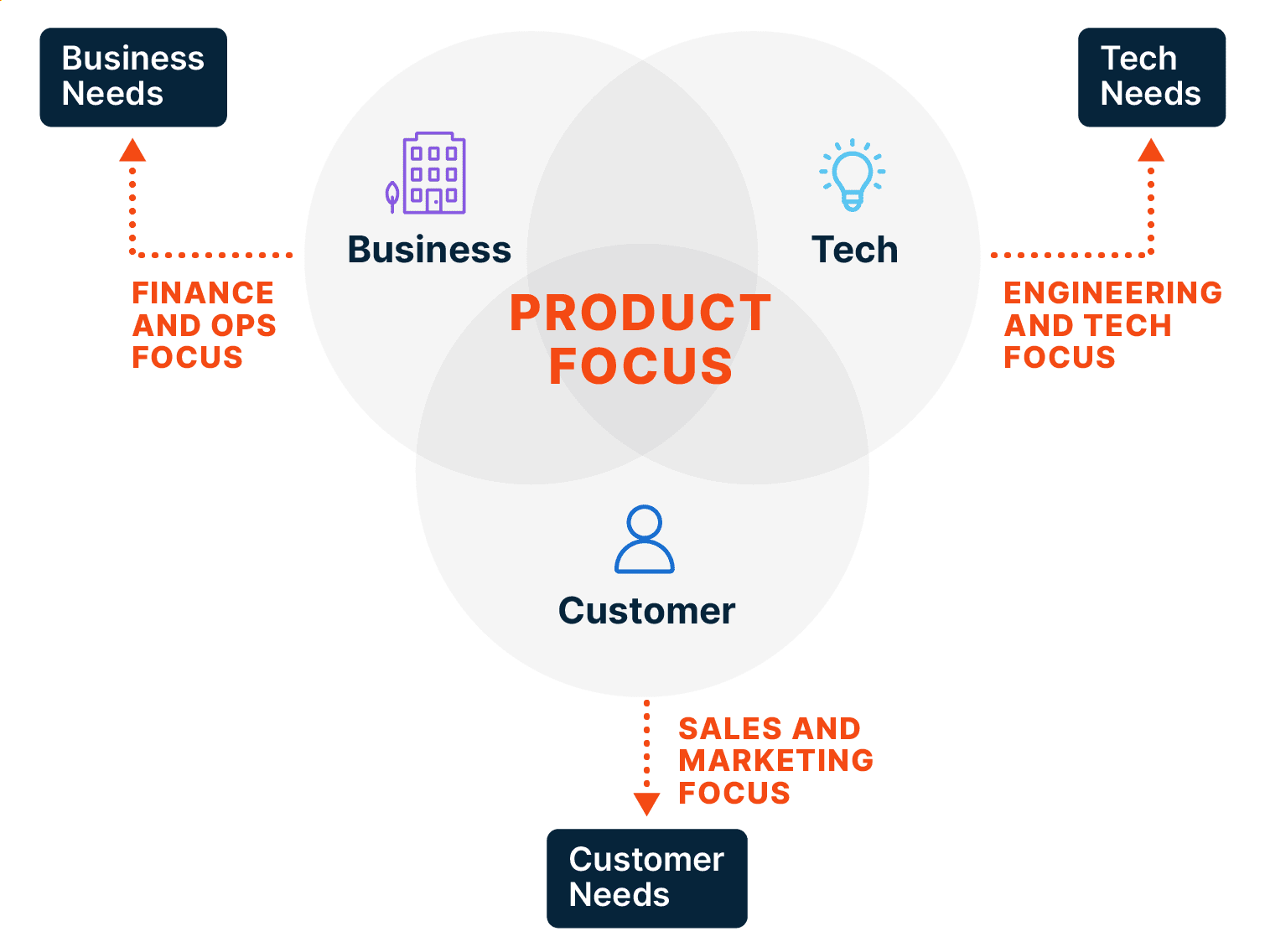Technology’s increasingly important role in an enterprise makes the buyer’s journey essential to your success. A solution provider needs to have an expert grasp on each customer's different motivations and expectations during each stage of the buying process. As Gartner Inc. predicts that enterprise IT spending will top $4.5 trillion in 2023, now would be an excellent time to review your buyer’s journey to better support your current and future customers.
Regardless of your specific tech industry, a buyer’s persona usually follows a similar path. With a wealth of information available at their fingertips, buyers have more power than ever before. How you guide these decision makers through the process determines whether you (and your customers) succeed.
This step-by-step guide to the enterprise tech buyer’s journey will help you develop an optimized process with reduced friction points.
Key Takeaways:
- With new services and solutions hitting the market every day, the technology arena faces regular disruptions
- Creating great content that drives the technical buyer’s journey through the main stages can help organizations stand out from the crowd
- An optimized buyer’s journey requires you to review your current marketing collateral, rethink your sales processes, and ensure you provide end-to-end training and support to any prospective buyers
🤫 PS: Looking for pricing on Tech marketing tools? Get a price list here
What Is the Tech Buyer’s Journey?
The buyer’s journey describes the entire process and each stage of the funnel an enterprise buyer takes while interacting with your company. It involves all functions in your organization, including marketing, sales, technical, and customer relationship management or post-sales support. The journey map helps reduce friction points and eliminate problems from the process to better guide your customers and influence their decisions.
Journey maps provide you with an end-to-end visualization of the entire buying process. Depending on the industry, the journey can take many steps, and in some instances, it can take years before reaching the implementation stage.
At its simplest, there are three main stages in the tech buyer’s journey:
- Awareness and discovery: At the start of the process, the customer will realize that they have a problem and need a solution to help solve it.
- Consideration and research: Prospective customers will start researching different technologies and solutions, often looking at what their competitors (and your competitors) are doing to solve similar problems.
- Engagement and decision making: Finally, the buyer will be aware of the solutions that can solve their problem and engage with vendors they may want to use.

Improving the buyer’s journey requires knowing your customer and understanding the pain points influencing their buying decisions. If you can design an optimized process for each customer, you’ll build strong business relationships that benefit both you and your customers.
How To Map the Buyer’s Journey for Today’s Tech Buyers
Most of today’s buyers are busy professionals who need you to provide answers quickly and expertly. The first step is to ensure you’re up to date with precisely what they want to know and create all your marketing collateral with those needs in mind.
Therefore, you’ll need to review your current marketing collateral before you can start optimizing the journey. You can then integrate your marketing content with your sales process, get technical buy-in, and focus on customer success. By approaching your journey mapping with these three strategies, you can build an optimized buyer’s journey that attracts more customers and ensures you can deliver solutions while managing their expectations at each step.
1. Reviewing Your Marketing Collateral
Marketing your products and services starts with building out the personas you wish to attract to your business and identifying their specific pain points. Many considerations inform your marketing process, but the most critical aspect to success is knowing what problem you want to solve for the buyer.
Typical buyer pain points may include:
- Increased regulations and compliance requirements
- Feeling overwhelmed due to an abundance of information available online
- Resource constraints and dependence on legacy technologies
- Previous experiences with other solution providers that didn’t succeed
Additionally, your marketing collateral needs to stand out from millions of online competitors. To help buyers discover your organization’s solutions, consider optimizing content for SEO and maximizing the use of social media platforms to engage with prospective buyers.
Remember that the technical buyer’s journey often consists of a wider audience than the contact person. The content will need to address multiple personas, including SMEs involved during the solution’s evaluation.
2. Update Your Sales Processes
Once a buyer is aware of your solution, the sales team needs to help the customer make a buying decision. As this is likely the most critical stage in the buyer’s journey, your sales process needs to be:
- Efficient and responsive: You need to engage promptly with any buyer who reaches out for more information
- Accurate and complete: Sales representatives need to provide the correct details about the solution and be able to walk customers through the entire process
- Factual and informed: You need to provide accurate data at all times while demonstrating the solution’s effectiveness in the current technology landscape
Review your current sales strategy according to updated market trends, including providing test drives of products, building proof of concepts, or running unique pilot programs for a specific customer. Highlight what type of business, technology, and customer needs these solutions to solve in the current market.
By approaching your sales process from these three pillars, you can engage with the tech buyer and demonstrate your capabilities—making the assessment and negotiation phases of the journey more accessible for all the stakeholders.

3. Technical and Customer Success Factors
Finally, you want to guarantee a successful solution implementation to maintain the business relationship. A positive customer experience is vital to attracting and keeping new customers by turning first-time buyers into loyal, long-term customers.
The main elements to optimize for your post-sales journey mapping are:
- Delivery: Customers want their technology switched on quickly with minimal disruption to their current operations
- Training: The methods that customers can access training for a new solution should suit the organization’s preferences as some customers want hands-on experience while others will want to learn as they go
- Implementation: Provide the exact implementation requirements, including a project schedule or data migration requirements if necessary
- Support: Always have resources available to support any issues that may arise, including a knowledge base or FAQ based on past experiences
Optimize Your Tech Buyer’s Journey with ActualTech Media
Succeeding in the technology arena today is more complex, with disruptors appearing from every direction. The role of marketing teams, content creators, and sales representatives all depend on a seamless, positive experience driven by great content. At ActualTech Media, we help tech organizations create modern content that generates new leads and helps them stand out from the crowd.
For more information about optimizing your content for an improved tech buyer’s journey, schedule a chat with our team today.